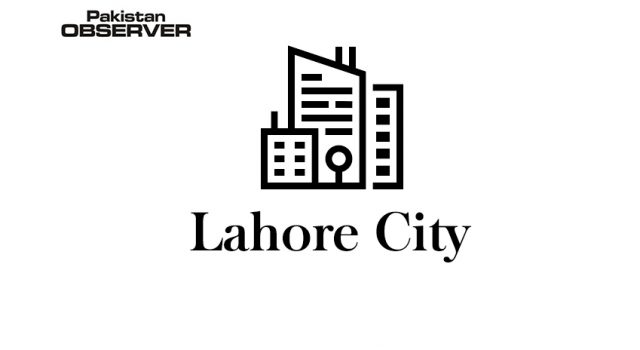Syed Muhammad Abubakar
The Global Landscapes Forum (GLF) organized the virtual Biodiversity Digital Conference 2020 – One World, One Health on 28-29 Oct 2020 to examine the relationship between biodiversity and health and discuss ways to harness the power of landscapes for transformative change towards sustainability.
GLF and the Youth in Landscapes Initiative (YIL) synthesized the perspectives shared in the sessions of the conference to produce the report One World, One Health: Recommendations to harness the power of landscapes.
The report outlines five thematic blocks, each describing a key paradigm shift and complementary recommendations and pathways to achieve biodiversity and restoration targets for 2030 and 2050.
Recommendations
Focus onpublic health perspectives
Emphasis must be placed on sectoral policies that address ecosystem, human, and animal health as One Health at the landscape level.
Climate and biodiversity loss crises must be recognized as pressing public health concerns.
Public health experts, traditional knowledge holders, and other experts must be included in landscape management policies and activities.
NarokCounty in Kenya set an example in such management by collaborating with government ministries, agro-veterinarians, I/NGOs, and pastoralists to address wildlife-borne diseases in the Maasai Mara ecosystem.
Transformation
of financial institutions
Financial structures must contribute towards enhancing the livelihoods oflocal communities and reorient incentives with adverse impacts on biodiversity towards achieving global conservation goals.
Through a collaborative approach, all stakeholders can work together to fill the USD 700 billion funding gap for biodiversity over the next decade.
Other steps include youth capacity building in conservation efforts and promotion of supply-chain infrastructure.
Engaging communities
in decision-making
Community ownership of decision-making processes is necessary to ensure equitable distribution of resources and to make progress in achieving biodiversity goals.
Stronger measures are needed to promote community ownership of financial pathways, food systems, greater agency in value chains, and supporting community-based business and young professionals for employment.
A landscape approach is needed to achieve biodiversity conservation goals and engage with landscape networks to build on local initiatives – such as those promoted through the HKH Call to Action led by ICIMOD.
The HKH Call to Action is a roadmap based on key findings of the HKH Assessment Report and proposes urgent actions for biodiversity conservation, mitigation of climate change impacts, and achievement of the Sustainable Development Goals (SDGs) in the HKH.
Knowledge sharing
Dialogue is necessary to create political support for meeting biodiversity conservation goals.
The COVID-19 pandemic has shown that the world can mobilize resources should they be needed urgently, and there is a need for greater cooperation and knowledge sharing to address the looming climate, biodiversity, and health crises.
Rights-based approaches in sustainable development
Policymakers need to operationalize rights-based approaches for sustainable development, which can help clarify how decision-makers uphold rights and social justice issues while developing frameworks, projects, and activities for landscape management.
Such approaches can help ensure that rights-holder participation is meaningful and that free, prior, and informed consent is properly obtained.
Upscale indigenous
initiatives
Focusing on community-led actions while addressing crises can help address the adverse impacts of top–down solutions.
Up scaling indigenous initiatives can help tackle local and global environmental challenges.
Indigenous communities and local knowledge holders have developed knowledge and innovations nurtured over generations of living in harmony with local landscapes that can help address the biodiversity and climate crises.
Building the capacity of local researchers and communities, particularly the youth, for knowledge sharing can ensure that this knowledge is passed to future generations and can help advocate the sustainable use of natural resources.
Support vulnerable
communities
Indigenous communities must be given a voice at global conservation forums to ensure that their proposed nature-based solutions do not become co-opted at their expense and turned intomere marketing buzzwords.
The report takes note of “the risks from the loss of community ownership over concepts such as nature-based solutions, transformative change and other paradigms in which marginalized communities have high stakes.”
Converting these
recommendations to
action in the HKH
These recommendations are particularly important for the HKH, where mountain communities have faced significant setbacks due to the COVID-19 pandemic, resulting in economic loss, unemployment, food insecurity, biodiversity conservation challenges, and gender and social inequalities.
Pakistan showed that even during the pandemic, conservation and employment can go hand-in-hand by creating more than 80,000 jobs through its Ten Billion Tree Tsunami programme.
The HKH has a growing youth population, so it is vital to target this group for achieving sustainable development and biodiversity conservation.
Furthermore, placing communities at the heart of decision-making ensures greater ownership and adoption of targeted interventions.
The policy recommendations put forward by the report can help harness the power of landscapes to achieve biodiversity and restoration ambitions of the United Nations Decade on Ecosystem Restoration (2021–2030), meet the 2030 Agenda for Sustainable Development, and realize the Convention on Biological Diversity’s 2050 Vision of “Living in Harmony with Nature”.
The recommendations can play a significant role in promoting solutions regarding sustainable use and conservation of our planet’s biodiversity.
Syed Muhammad Abubakar
is a KMC Officer at ICIMOD.










